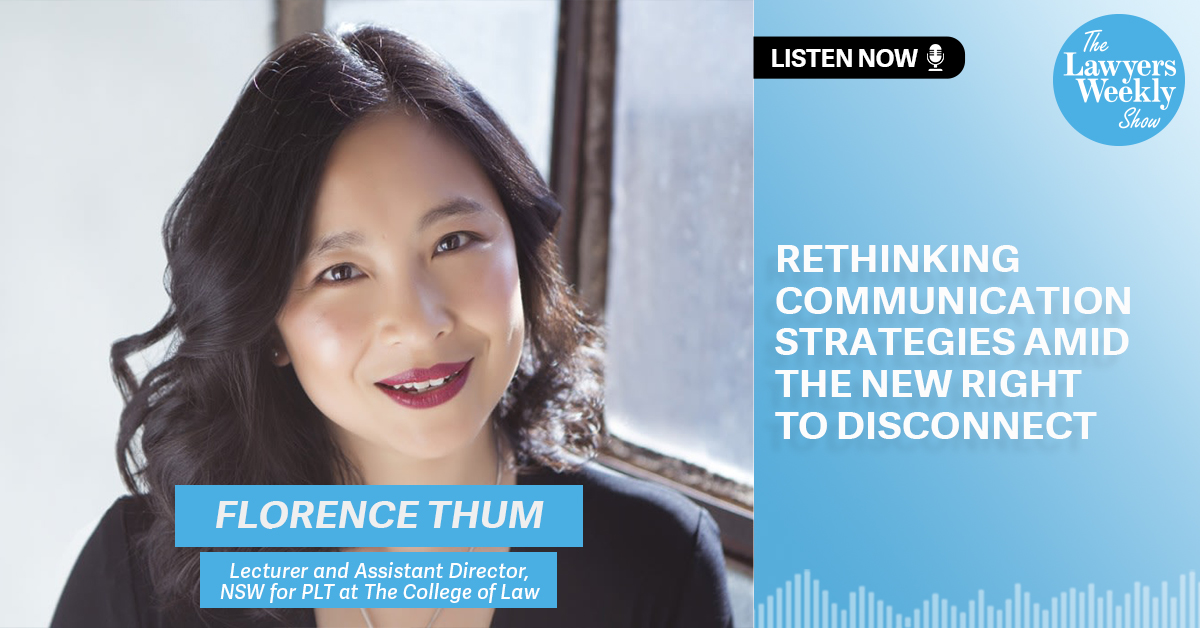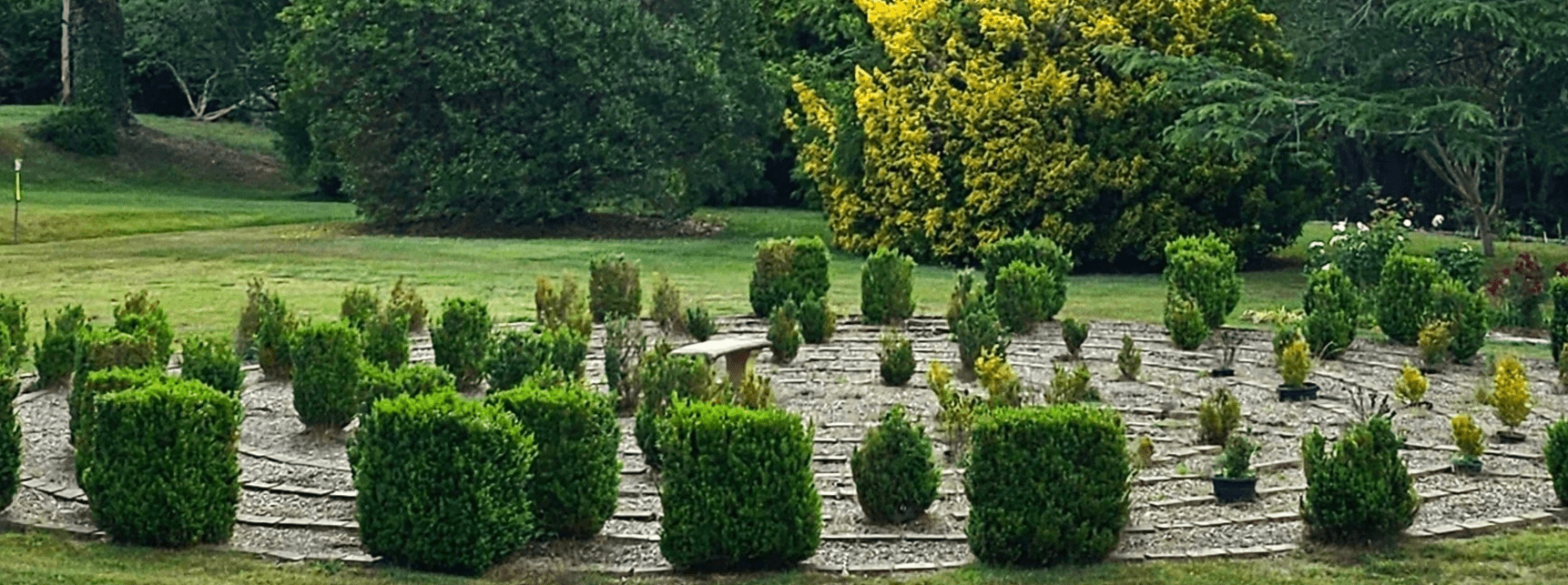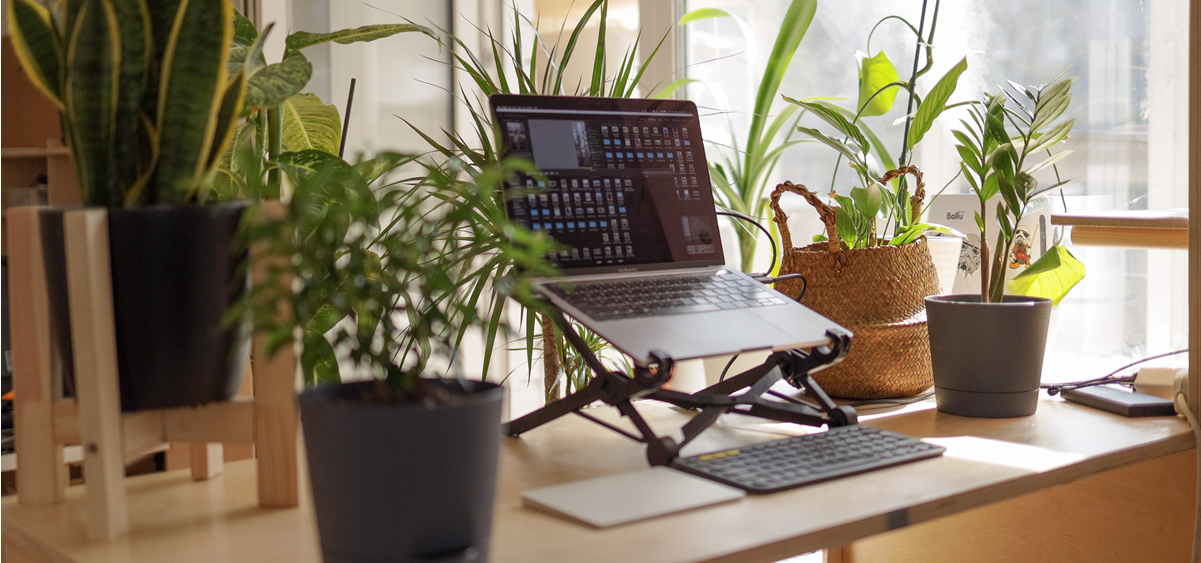Being trauma-informed
There’s been a lot of ‘talk’ about being trauma-informed in the workplace. Being trauma-informed is a must, but how?
It is contextual. As a psychotherapist in my professional space, being trauma-informed requires significantly greater attention and skill.
Nevertheless, for all our daily interactions, having an understanding the nature of trauma and adopting the necessary mindset and attitude are imperatives. Human connection and the compassion we have towards each other are the basis of being trauma-informed. It is not a thing we add to our repertoire only when we believe there may be a need for it; it is to be integrated in the way we communicate and interact generally.
Read about engaging in trauma-informed practice in my recent article for Lawyers Weekly in which I dispel some myths about trauma and provide some guidance you may find useful. They are applicable to any professional practice.
© 2024 Transfigure Therapy
Walking the labyrinth – reflecting on reflection
Reflecting on an experience of walking the humble labyrinth during a silent meditation retreat, I notice its metaphor to our life.
I entered the labyrinth with the spirit of contemplation and an openness to receive what comes. It wasn’t long before my mind got the better of me. As the path led me to the outer edge instead of the centre, I told myself it did not make rational sense. Then I tried to work out the ‘how’ and ‘why’ in my mind. And before I could find an answer, a little voice said, “the path must not be correct”. Then I heard a nervous laugh from within, which said, “I know nothing of the construction of the labyrinth yet I doubt its very presence”. This awareness of the moment brought me to lay these thoughts down, and to trust the path.
In trusting the path, I was choosing to trust the original builders of the labyrinth and those who added to it, to the walkers who had not raised issues about the labyrinth for there was none. I chose to trust in the stillness of that moment, to my senses. So I looked up to admire the changing scenery as I took each step along the path to the centre.
A stone bench sat at the centre of the labyrinth. The arrival anticlimactic; it did not live up to expectations which I didn’t know I had until then. Yet there I learned, it was not about this destination but the journey there that mattered. And that perhaps without expectations I would have appreciated the moment of arrival.
I retraced my steps to leave the labyrinth. Once again, a thought came to mind that the walk would be boring even as I took the first step back. I had been on this path just moments before, after all. Then I looked up and around me as I walked. The scenery was unfamiliar, different. The experience – even of the humming of the wind, the rhythm of the rustling of trees, the enchanting bird calls – was different. My idea of what should be and would be abated. Every moment is a new moment, to be experienced afresh.
On reflection, I am grateful for the awareness and insights. I realise this experience of mine is not dissimilar for many of us in our personal and professional life.
We are compelled by the impetus of time and efficiency to get to the centre, evaluating our experience and measuring our success based on expectations which are historical in nature.
But this year I hope our reflection will be different. As we walk back through this past year, let’s appreciate a different scenery.
Choose different measures of ‘success’. Beyond efficiency and productivity, beyond monetary rewards and career perks, consider how well you have spent time in relationship, how well you have cared for yourself, how deeply or broadly you have considered, how you have opened to the new or different.
Measure ‘success’ by the quality of your personal and professional relationships, how cohesively your life integrates your most valuable, your contribution to the ‘success’ of another, the positive impacts you have brought to your environment, your demonstration of responsibility and accountability, your expression of kindness and generosity, and the list goes on.
We may have short- or long-term plans in our life, but what we do with these plans as we walk on the path makes all the difference. It would not be wise to doggedly stick to them.
Look up to the beauty and possibility of each moment and what it presents, and be willing to change and move from ideas and plans formed from moments in history.
© 2023 Transfigure Therapy
Indicators of unhappy workplaces?
On invitation from Lawyers Weekly, I provided my comments on “[t]he new trends combating ‘unfulfilling’ and ‘detrimental’ workplaces‘.
Do not underestimate or dismiss these trends – such as, ‘snail girl era’, ‘bare minimum Mondays’ and their predecessor ‘quiet quitting’ – they give us valuable insights on the important issues and how to improve the modern workplace (and not limited to the legal profession).
I have posted about finding fulfilment in our work. And in turn, workplaces must evolve – it is a 2-way street.
“Workplaces must embrace its diverse people and the different ways in which they work; this means establishing inclusive practices and systems that promote psychological safety – in particular, trust and accountability – and are adaptable to the needs of its people”.
“Relationally, in the workplace, we have to care, to demonstrate compassion for others and ourselves, to move away from a scarcity mentality – where more for you means less for me – to an abundance mindset – there is enough for everyone, and to maintain a win-win approach with each other and our work.”
~ FlorenceT
Check-in – connection and belonging
I am noticing a lot of conversations around maintaining staff wellbeing, and supporting our teams and colleagues through these difficult times. Regardless of our location and the varied degree of “freedom”, all of us have been impacted by the pandemic.
Here’s something we can do, individually, to support our colleagues and friends.
Create a support circle.
It is informal and casual. It is establishing social connection – via chat, phone call or video call, or social media interaction.
I know the people in my circle will contact me if they need/want to. And I do the same with them – a difficult moment requires some “debrief” and a happy occasion is for sharing. That’s healthy.
Set your intention
Start by setting an intention. The support circle does not require us to be counsellors. Create a circle which you and others can belong and connect.
Shared experiences (say, of our workplace, of a particular professional group, or team) engender experiential and intellectual intimacies, and allow for conversations. The circle will be a vault where confidences are maintained. Bring our authentic self into the circle – show yourself and be prepared for candid conversations.
The “logistics”
Be specific and realistic about what we can do. This is after all about wellbeing, and self-care is a priority.
How much time will we dedicate to this, and how many per week? Individual or group interaction?
There is no fixed rule. This is a circle and the “arrangement” is loose. My check-ins are usually 1-to-1. It takes 10-15 mins and I find that’s enough for us. A matter for you how often you can engage with this. If you can manage one interaction a week, that’s good enough. At least one person will have received the generosity and kindness of your time and attention.
Who can I possibly contact? How big should the circle be?
Though not exhaustive, these questions can remind you of someone whom you can include in your support circle.
- Who lives alone?
- Who misses their family living interstate or overseas?
- Who has caring obligations exacerbated by social restrictions?
- Who is extroverted or sociable yet compelled to live under social restrictions?
- Who haven’t you heard from in a while?
- Who may be feeling additional stress directly because of the pandemic for eg. tech support staff who are working hard to enable our remote working life?
There is no “should” in this. We willingly come into the support circle. And if it is a circle of 2 persons, then so be it. Both of you will be better off with the experience.
No, thank you
Be sensitive to the possibility that our attention is not always welcomed or needed. Or someone may be receiving too much contact.
If you are being approached by too many people, then convey a grateful “no, thank you” to some of them. Setting personal boundaries is a resilience skill. Something along the lines of “thank you for checking in, I already have a support circle. Someone else will benefit from your check-in. Perhaps you may wish to check in on others who need support.”
If you are sensing a need for support within your community, and wondering what to do, I hope this is food for thought…and action.
You have the power to make a positive 😊 difference to someone’s day.
As we give, so we receive.
A professional in a video-conference
Through the camera lens, our eyes clock congruence, that is harmony or compatibility (in this context) of words, tone, facial expression, and any other non-verbal cues.
Recall the times you met a stranger in a certain place, and thought “something’s not quite right”? Or chancing upon a friend and sensing something’s off? This is because we pick up inconsistent cues from that person’s verbal and non-verbal presentation including body language.
The same when we are in a video-conference. In fact, we are working harder to pick up cues because we know we have less to work with. And incongruence distracts.
So what helps us to appear professional in a video-conference?
Appearance
What we wear and our personal grooming and style contribute to the professional appearance. What is appropriate will depend on the purpose of the video-conference, who the participants are, perhaps the industry/professional expectation, and the environment in which the video-conference is being held. This is synonymous to wearing appropriate attire to an in-person meeting. Most importantly, be authentic. There are different types of casual professional attire, select that which portrays who you are.
Environment
Our appearance ought to be consistent with the environment, that is our surroundings when we are in a video-conference. Is it congruent to be wearing a dark suit if our background is a view of the bedroom (no matter how stylish it may be), or a Zoom background of a beach at sunset? It is likely we will sense a degree of awkwardness. If you wish to convey a relaxed atmosphere then lose the dark suit.
We bring our environment into a video-conference through the sights and sounds being transmitted from where we are physically located. Mute the microphone where required and minimise potential visual distraction to other participants in the video-conference. This is also a sign of respect.
Tech and equipment
A good webcam is necessary to capture clear visual and audio, which eases communication. This is a necessary investment (not a luxury) in the current professional space. Couple it with a good pair of headset or microphone and speakers. No matter how good we look, if we can’t be heard then the whole scene is sub-standard and interferes with the perception of professionalism. Imagine a documentary with beautifully shot visuals but you have difficulty hearing the narrator?
Placement of the camera is also important. A view up one’s nostrils is never pleasant, nor is a view of the top of one’s head. The camera should be placed directly at eye level or slightly above the eye-line. The illusion of us looking into the camera and thus meeting another’s eyes is inviting. Its absence can create a sense of disconnection and isolation.
Lighting is important. We are attuned to consider a face hidden in shadow as suspicious. No matter if we are thinking it or not, we will react less favorably to a partially hidden face, or when we are unable to see someone’s eyes or facial expression. This is particularly true in a culture which considers making eye contact as a sign of sincerity, honesty and good manners. Using a ring light to illuminate our face solves this issue. Ring light is usually placed behind the camera and directly facing our face. This allows flexibility of where we position ourselves for a video-conference, and removes the need to be facing a window for proper light or be concerned about back-lighting.
Preparation
Spend time considering what you need before each video-conference. Be prepared.
Do not turn on your video or unmute before you are ready. Shuffling paper, appearing distracted as you attempt to close down an application, fidgeting as you make yourself comfortable – all can appear less than professional.
Perhaps this means leaving yourself with ample time in between calls to gather yourself before you start the next video-conference.
Attitude
Professionalism is fundamentally about behaviour and attitude. Our behaviour ought to be congruent with our attitude.
Any discomfort or resentment (a video-conference may not be everyone’s meeting mode of choice) will channel through as a result of inconsistency in verbal and visual expressions, say between your stiff smile, or the wariness in your eyes, or your agitated gestures, or your constant shrugs or nervous laugh.
A good way to familiarise yourself to being in front of a camera is to be in front of one. Practice, for example starting your webcam and leaving it on while you work, or take a recording of yourself. As with actors, you will soon “forget” about the camera, or be less self-conscious. You may even learn to use the camera to your advantage.
A moderate and calm demeanour assists with a professional presentation. Exaggerated gestures or volume are magnified in a video-conference. Fidgeting and sudden movements will interrupt and distract. To find “just right” will depend on the context and how practised you are before a webcam.
When the camera is focused primarily on your face – any smirk, flinch, grimace, or eyes-rolling, are captured and transmitted. Being respectful is an important condition to being a professional. A respectful attitude is keenly felt even through the camera lens.
I hope this gives you food for thought and inspiration to act.
~ FlorenceT









